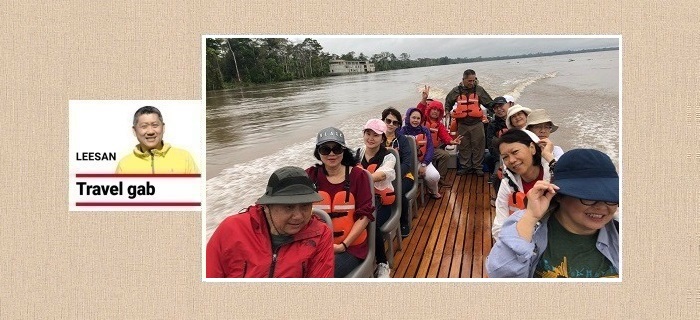Protecting Earth by – by leesan
We need to do our part in keeping the environment safe, clean and healthy for future generations.
HEADQUARTERED in Madrid, Spain, the United Nations Tourism (UN Tourism) is leading the citizens of the global village towards a “responsible, sustainable and universally accessible tourism”.
At first sight, the UN body seems to remind the world to safeguard our planet while travelling, so that we can leave behind a healthy planet where future generations can continue to dwell safely.
But how is the human habitat compromised today? To put it bluntly, humanity has accelerated the environmental degradation of our planet, thanks to over-development, industrialisation, militarisation, urbanisation and congestion.
In 2018, I took a group of Malaysian tourists on a cruise within the world’s biggest and most verdant tropical rainforest in the Amazon Basin in Brazil.
Back then, our eco-guide told us proudly, “We have abundant rainfall, and the flora and fauna are growing happily here.”
His words still linger in my mind today, as I read reports of how the severe drought in the Amazon Basin has brought forth lots of subsequent serious problems like famine, and the deterioration of native animals and plants. Even the Indigenous folks there are suffering.
It is hard to believe just how bad global warming has become. It is so bad that even the biggest green lung of the Earth is not spared from its disastrous consequences.
In 2020, during my fourth expedition to Antarctica, we learned that an ice sheet the size of London was breaking off and rapidly melting. And when I made the same trip again in 2023, an ice shelf the size of the whole of Britain was found breaking off and slowly drifting towards the Atlantic, and melting away.
Local Indigenous residents, along with the penguins, were forced to move further south towards the interior, as their major food – krill – was facing extinction as a result of warmer temperatures.
The Arctic is not any better either. The polar bears are faced with starvation due to the continued shrinking of the ice sea.
Meanwhile, the Maldivian islands could one day be completely submerged as the sea water level rises.
The major earthquakes that struck different parts of our world this year were absolutely terrifying, not to mention the super typhoons in Asia’s north-eastern side that took place in September and this month.
Elsewhere, Florida in the United States, too, suffered from Hurricane Milton and and tornadoes of unprecedented scales, followed by massive rainfall and floods.
Residential houses, roads and infrastructure in all these places were badly damaged, along with crops and livestock. As a result, local residents suffered immeasurable losses.
Natural disasters and hostile weather have been ravaging planet Earth successively. Many of the natural disasters are, honestly, caused by human actions.
So, even though its powers are limited, it is good that UN Tourism is trying to encourage people to care about the Earth – our one and only inhabitable planet.
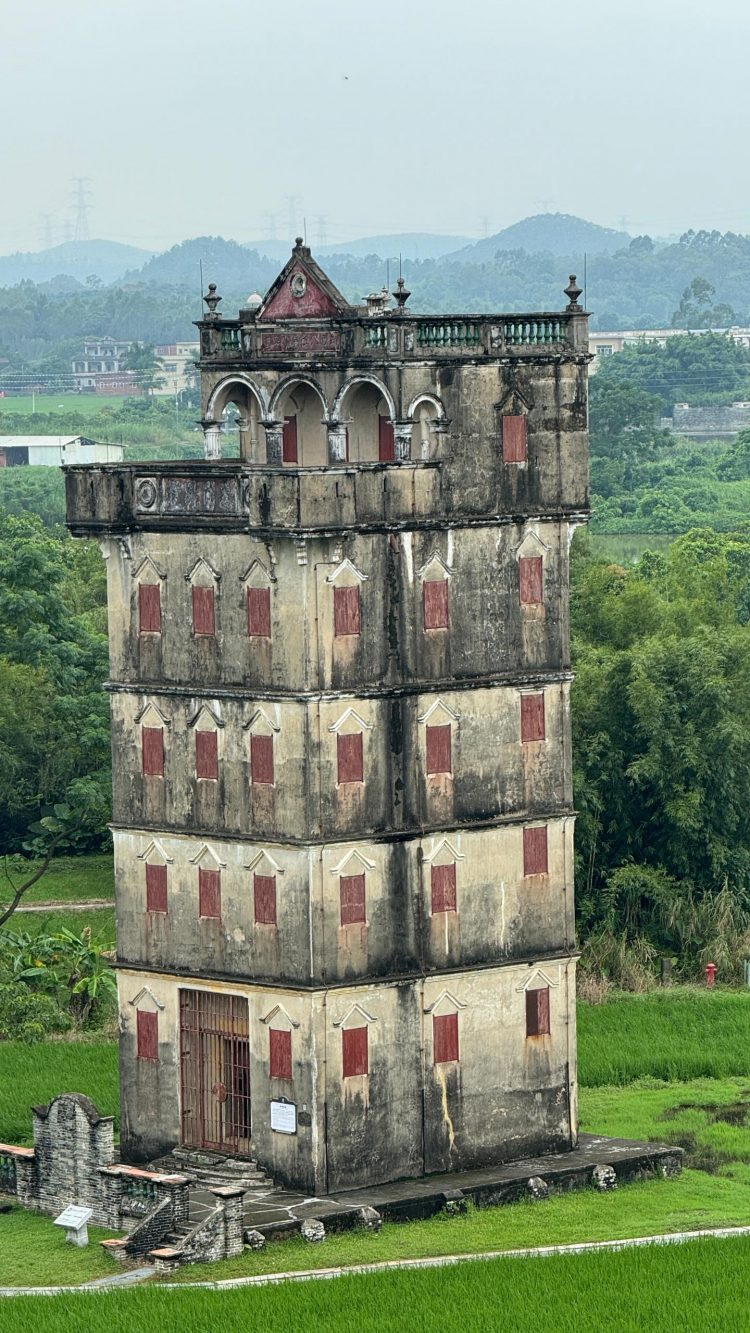
The Kaiping diaolous and Villages is a unesco World Heritage Site in china’s Guangdong Province. There were 3,000 of such diaolous or watchtowers in the 1920s, but today, only about half are still around. This particular one is ‘yunhuanlou’, built in 1921 by Fang Wenxian, a chinese citizen who once lived in Malaysia.
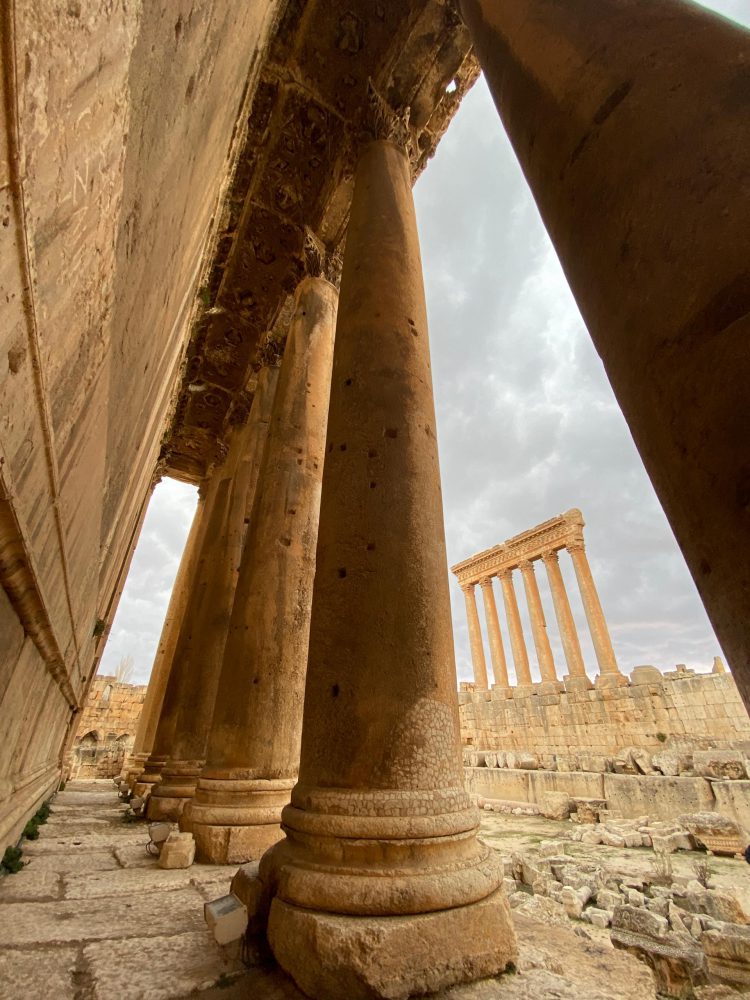
The temple complex in the ancient city of baalbek in Lebanon is said to be one of the greatest architectural masterpiece of the ancient roman era. For thousands of years it has survived the ravages of war, as well as natural and man-made disasters. Hopefully, it will also be spared from the current Israel-Lebanon conflict.— Photos: Leesan
Every year, some 1.5 billion people travel around the world to experience new cultures.
With such movements of people, we should realise which areas require our urgent action to ensure their continued existence. More importantly, we can work together to create a greener tourist environment, such as refusing excessive carbon consumption during our trips, minimising food waste, not using disposable toothbrushes provided by the hotels, and saying “no” to single-use chopsticks and other items, among others.
To put it plainly, adopt a simpler and greener lifestyle in order to create a more sustainable environment.
Although such actions can seem minor and insignificant, each of us has the power to make a change.
Apart from climate change, the wars and conflicts happening all over the world are also adding to the problem. Not only are innocent civilians becoming victims, historical landmarks, world heritage sites and agricultural crops are wiped out, too.
Flames from the war are damaging our atmosphere, disrupting food chains, triggering famine and diseases and turning millions of people into refugees, which then cause oil prices to skyrocket and the ensuing inflation.
Every year, Unesco will announce a host of cultural and natural heritage spots that are inscribed into its World Heritage Sites list. This is not just to remind people to protect the historical legacies of humanity over the millennia, but to also encourage folks to visit these sites and learn from them.
For me, this is how tourism can help us improve ourselves.

The Panlong Ancient Road stretches 36 kilometers, reaching an altitude of 4,200 meters with a vertical drop of 1,000 meters. Featuring 600 S-curves, it is located in Tashkurgan, China’s northwesternmost region, bordering Afghanistan, Pakistan, and Tajikistan. It holds great potential for sustainable tourism.
As a major sector that promotes the global economy, tourism also encourages intercultural exchanges, innovation and sustainable development.
While much of the world now appears to be in harmony, there is actually this undercurrent of turbulence lurking somewhere, while our environment is experiencing severe deterioration.
The tourism industry can play a pivotal role in minimising the negative impact on our environment while positively shaping our society and whipping up good governance, in the end materialising more sustainable and morally responsible tourism.
Anyway, I feel that UN Tourism’s “responsible, sustainable and universally accessible tourism” philosophy will indeed prompt key industry players to reconsider enhancing their ESG (environmental, social, and governance) strategies.
In tourism, ESG practices are effective solutions to boost sustainable development, catch the attention of consumers, and ensure the sustainability of their businesses. Only in this way can our planet Earth be protected, and the future of our posterity assured.
Let’s come together to explore the true meaning of travel.
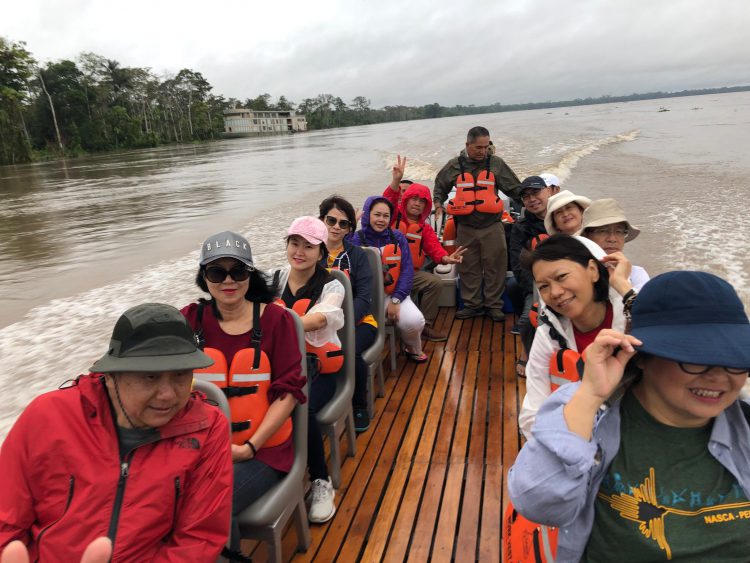
Exploring the longest river in the world, the Amazon River, can be a great experience in eco-tourism. However, global warming and human activities may permanently destroy the ecosystem.
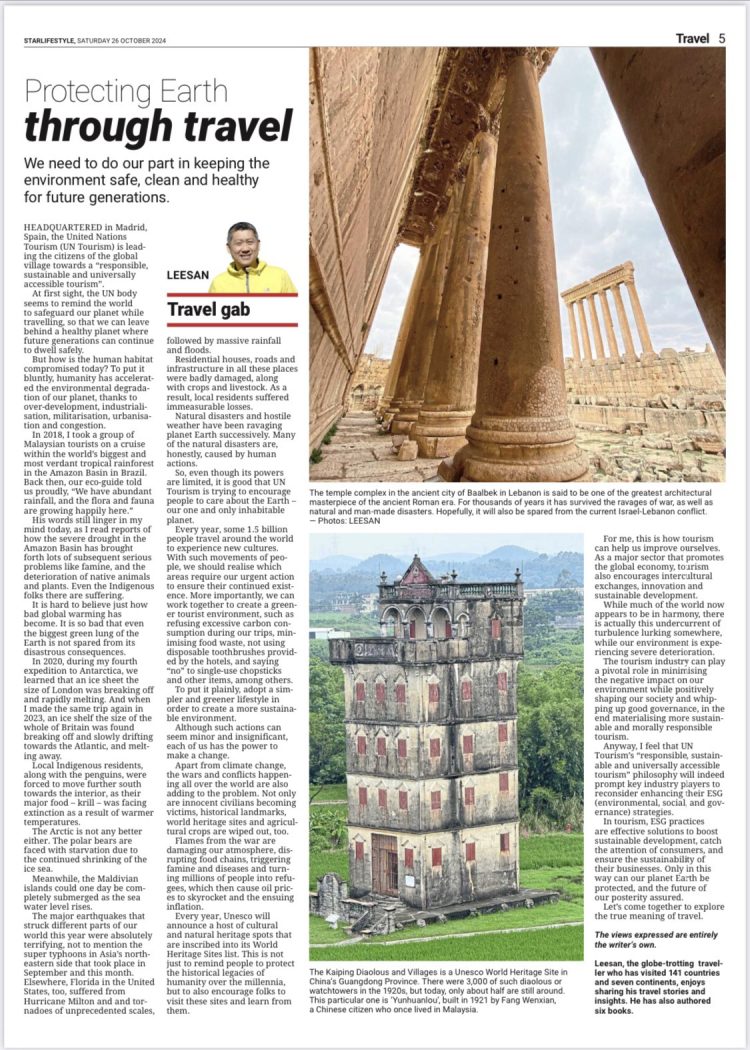
Published in The Star, 26 Oct 2024
全球超过80000家酒店,Apple101助您轻松订房,出行无忧,绝对优惠价。入住期间付款,多数客房可免费取消!
